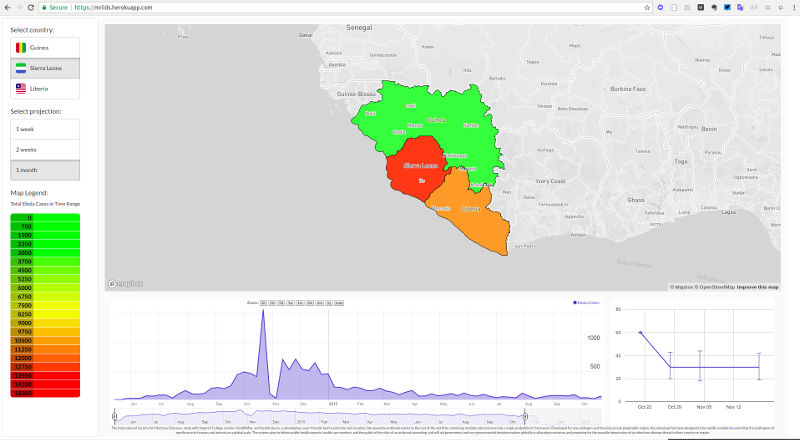Home

User friendly tool mapping the Risks of Outbreak Events Spreading (see Presentation)

To join in the conversation please create a Github account.
MRIIDS is an Open Development project funded by USAID and we welcome the sharing of insights and data in support of Mapping the Risk of International Infectious Disease Spread.
Please join in the conversation here
Problem: In our increasingly interconnected world, it is crucial to understand the risk of an outbreak originating in humans or animals in one country or region and then spreading to the rest of the world. This has been done in the past for specific pathogens, but there is no automated probabilistic framework that allows real-time mapping of the risk of exportation of an outbreak event from country X to any other country Y.
Solution: The International Society for |Infectious Diseases, along with Imperial College London, HealthMap, and Healthsites.io, will develop and deploy a user-friendly tool to estimate and visualize risks posed by outbreak events reported on ProMED to the rest of the world by combining multiple data streams into a single probabilistic framework. Developed for one pathogen and focusing on one geographic region, the prototype will be designed to be rapidly scalable by extending it to pathogens of significance to humans and animals on a global scale. The system will inform public health experts, health care workers, and the public of the risks of an outbreak spreading, and will aid government and non-governmental decision makers globally in allocating resources and preparing for the possible importation of an infectious disease threat to their country or region.
 Schematic overview of the proposed tool including data streams.
Schematic overview of the proposed tool including data streams.
https://github.com/annecori/mRIIDSprocessData
- Number of cases over time and space.
From https://www.promedmail.org/
- Transmissibility of pathogen
From literature reviews. Can vary across space for example as a result of climate.
- Connectivity between locations
Various models and data sources will be explored.
- Host & environment susceptibility
For example vaccine coverage. From https://www.ghsagenda.org/ and other sources
- Ability to contain the outbreak
Healthcare capacity of a region from https://healthsites.io/
Simple model to predict the spread of infectious disease threats and start the validation process using historical data.
MRIIDS is dedicated to the design and development of an open source digital ‘risk tool’ that visually communicates the occurrence of new infectious disease outbreaks and forecasts the probability of that outbreak spreading across a region. The tool’s algorithm will be based on several data sets, to include epidemiological data (number of initial cases, transmissibility of the pathogen, shifting population metrics, etc.) as well as other data such as domestic/international travel, weather patterns, and health clinic location and capacity. The tool will focus on Ebola and Marburg viruses initially, although it is intended to scale to other diseases in future. We hope that by providing users with timely information on the immediate risk of infectious disease spread, we will ultimately help mitigate the catastrophic effects of outbreaks by strengthening capacity, supporting resource allocation decisions, and informing advocacy planning for public health.
- Map interface with spatial and temporal components to show disease occurrence and forecasts
- Epi curves at multiple scales (local, national, international)
- Look ahead over multiple short time frames (next week, next month, etc.) to forecast uncertainty as an outbreak evolves
- Adjust predictions by different degrees, such as a more virulent strain or less immunity among the population
- ‘Confidence score’ to indicate strength of the forecast data
- Access to historic trends to understand current case numbers
- Add commentary and expert opinion
- Share or download key information (CSV files, graphs, etc.)
- Set email/SMS alerts
- Open access, to promote data sharing and multinational/regional collaboration
- Available in English, French and other languages